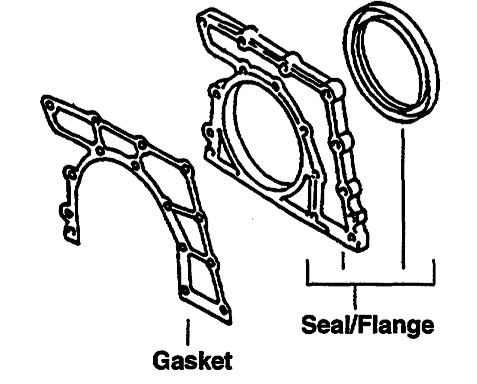 This condition affects 1996 A4 with 2.8L V6 (Engine Code AFC). When replacing the seal, the new seal is supplied pre-installed in the flange.
This condition affects 1996 A4 with 2.8L V6 (Engine Code AFC). When replacing the seal, the new seal is supplied pre-installed in the flange.
Seal/Flange P/N: 078 103 171H
Flange gasket P/N: 078 103 181 (must be ordered separately).
Caution: Part numbers are for reference only.
1. Carefully remove installation tool that comes with seal and apply a small amount of engine oil to the inner lip of the seal.
Note: Lubricating the seal lip will ease seal installation and reduce the tendency of the seal to roll as it is being installed.
2. Carefully reinstall the seal installation tool.
3. Install oil seal and flange with new gasket.
4. Torque reusable flange bolts to 7 ft.lbs. (10Nm).
Some or all of this information was provided by the Automotive Parts Remanufacturers Association (APRA). For more information on technical bulletins available through APRA call 703-968-2772 or visit www.AutoBulletins.com.













